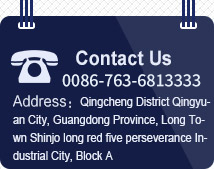

In the first half of this year, China's textile industry maintained an overall stable operation amid a complex internal and external environment. Each link of production, domestic sales and export had both highlights and challenges. "Trading price for volume" became a prominent feature of the market situation.
The production capacity at the production end is reasonable, and the sub-industry differentiation is obvious
In the first half of the year, the capacity utilization level of the textile industry remained within a reasonable range and was better than the national industrial average. Data from the National Bureau of Statistics shows that the capacity utilization rates of the textile industry and the chemical fiber industry have reached 77.8% and 86% respectively. The industrial added value of enterprises above designated size increased by 4.1% year-on-year. Although it slowed down by 1.5 percentage points compared with the same period of the previous year, production in most links of the industrial chain remained stable.
In the sub-sectors, the industrial added value of the wool textile and linen textile industries achieved double-digit growth, while the growth rates of sub-sectors such as chemical fibers, filament weaving, and industrial textiles were higher than the industry average. Among the 15 major categories of textile products, the output of 9 types increased year-on-year, demonstrating a positive trend of structural optimization.
Domestic sales consumption has unleashed a coordinated growth of both online and offline channels
Under the stable domestic macroeconomy and the impetus of policies to boost consumption, residents' demand for clothing has been steadily released, driving a moderate growth in the domestic sales of textiles and garments. Data shows that in the first half of the year, per capita clothing consumption expenditure of residents increased by 2.1% year-on-year, with the growth rate accelerating by 0.9 percentage points compared to the first quarter. The total retail sales of above-scale clothing, shoes, hats and needle and textile products increased by 3.1% year-on-year, 1.8 percentage points faster than the same period of the previous year. Sales of clothing items online increased by 1.4% year-on-year, with the growth rate rising by 1.5 percentage points compared to the first quarter.
In terms of consumption hotspots, categories such as domestic trends and styles, healthy textiles, and green and low-carbon products remain in the first echelon of major e-commerce platforms. Live-streaming e-commerce and the "6·18" promotion models have activated consumption potential and driven the simultaneous growth of online and offline sales.
Declaration: The content and template of this article are compiled from the Internet and the copyright belongs to the original author. If there is any infringement, please inform us in time and contact us for deletion.




